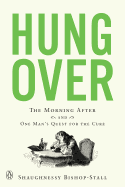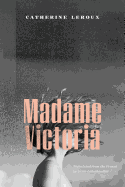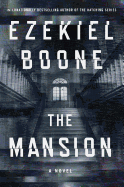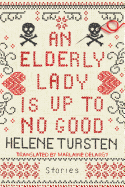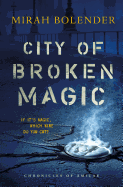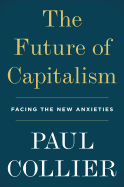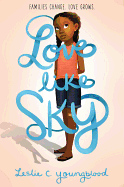Week of Friday, December 21, 2018
Depending on where you live, snowy weather is either a looming inevitability, an exciting distraction or a distant dreamy vision realized through books, television or movies. Books set in snowy locales are much more fun than dealing with icy sidewalks, and offer their own cozy comfort.
 Such is the case with Snow Falling on Cedars by David Guterson (Vintage, $16). Set on a misty island off the coast of Washington State, the main action takes place in the form of a murder trial during an epic snowstorm. The storm adds its own sense of drama, burying roads outside while at the same time long-hidden truths are unearthed inside the courtroom.
Such is the case with Snow Falling on Cedars by David Guterson (Vintage, $16). Set on a misty island off the coast of Washington State, the main action takes place in the form of a murder trial during an epic snowstorm. The storm adds its own sense of drama, burying roads outside while at the same time long-hidden truths are unearthed inside the courtroom.
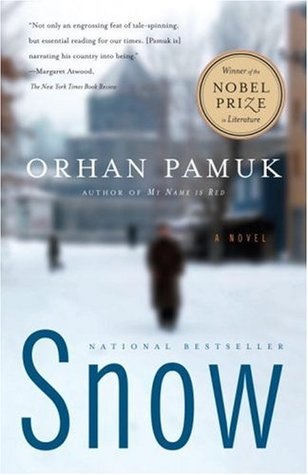 One does not think of harsh winter weather in Turkey, but there it is in Snow by Orhan Pamuk (Vintage, $16.95). Ka, a controversial poet, is caught in an unusually severe blizzard as he travels from Istanbul to the town of Kars. He is fascinated by how the snow erases everything familiar and veils dirt and mud to suspend his destination in a state of purity and peacefulness. Despite the political dangers of his journey, the blizzard prevents Ka from turning back.
One does not think of harsh winter weather in Turkey, but there it is in Snow by Orhan Pamuk (Vintage, $16.95). Ka, a controversial poet, is caught in an unusually severe blizzard as he travels from Istanbul to the town of Kars. He is fascinated by how the snow erases everything familiar and veils dirt and mud to suspend his destination in a state of purity and peacefulness. Despite the political dangers of his journey, the blizzard prevents Ka from turning back.
 Winter mornings as clear as crystal and the crackling of frozen snow greet readers of Ethan Frome (Penguin Classics, $10), Edith Wharton's classic. Ethan is a poor New England farmer as frigid inside as his snow-hardened fields. His life is transformed from cold grey to a warm amber by a lively young woman who slowly melts his heart and convinces him to make the ultimate sacrifice. A beautifully simple yet haunting story, it will stay with you long after the thaw of spring. --Shahina Piyarali, writer and reviewer
Winter mornings as clear as crystal and the crackling of frozen snow greet readers of Ethan Frome (Penguin Classics, $10), Edith Wharton's classic. Ethan is a poor New England farmer as frigid inside as his snow-hardened fields. His life is transformed from cold grey to a warm amber by a lively young woman who slowly melts his heart and convinces him to make the ultimate sacrifice. A beautifully simple yet haunting story, it will stay with you long after the thaw of spring. --Shahina Piyarali, writer and reviewer
The Western Wind
by Samantha Harvey
In winter 1491, a small English village endures privations and the consequences of a mysterious death. The Western Wind by Samantha Harvey (Dear Thief) is a poignant tale of superstition and guilt narrated by a quietly despairing parish priest.
John Reve, the priest, is, as his name implies, revered by all. "You're God's word to us and his wish," a parishioner says to him, but in this isolated and uneducated flock, faith is accompanied by superstition. When a wealthy and ambitious landowner drowns in the nearby river, the fearful residents feel sure it's a severe punishment from God. Even though it's not clear if the drowning is murder or suicide, the rural church dean expects Reve to name someone as murderer. Reve resists, thinking, "Death itself is the murderer, and birth its accomplice. Men die because they're born to die."
Reve's confessional, a simple box with a recently added screen that mocks a non-existent privacy, hears transgressions both large and small. Dispensing wisdom and pardons in equal measure, he's the one person who knows every sinful thought and action in the village. And, as it turns out, Reve is keeping secrets himself. But who will take his confession?
The Western Wind is a sublime and heartrending story, perfect for readers who enjoy impeccably chosen language and a penetrating look at the human condition. --Cindy Pauldine, bookseller, the river's end bookstore, Oswego, N.Y.
Discover: During the Middle Ages, the parish priest of a small village confronts a mysterious death as he struggles with his own doubts and regrets.
Madame Victoria
by Catherine LeRoux, transl. by Lazer Lederhendler
In 2001, a woman's skeleton was found in the woods near Royal Victoria Hospital in Montreal. Extensive forensic testing revealed where the woman had lived, what she ate and even how she looked--but the remains were never tied to any missing person or identified. This real-life story of a skeleton dubbed "Madame Victoria" is the inspiration for Catherine Leroux's book of the same name, which imagines 12 possible histories for the unidentified bones.
Though billed as a novel, Madame Victoria (translated from the French by Lazer Lederhendler) reads more like a collection of linked short stories. Was she a teenage mother grieving the loss of her son, dying of cancer and oblivious to reality? Or a Russian spy, murdered by an ex-lover? A woman allergic to the presence of other people, or a slave running for freedom? "It was inferred from her tired bones and the sad features attributed to her, that she had ended up alone because she had made a mess of her life." But Leroux (The Party Wall) suggests otherwise, giving Madame Victoria a sense of purpose and direction, a life not made of messes but of intention.
Like any short story collection, some stories here are stronger than others. The best among them are those that capture Madame Victoria's quest to be seen, to be known, to be understood--an all-too-familiar feeling for anyone who has ever waited for someone simply to speak her name. --Kerry McHugh, blogger at Entomology of a Bookworm
Discover: This collection of stories imagines 12 possible histories for the real-life unidentified remains of a woman found in Montreal.
The Cake Tree in the Ruins
by Akiyuki Nosaka, transl. by Ginny Tapley Takemori
At 15, Akiyuki Nosaka (Grave of the Fireflies) was orphaned during the U.S. firebombing of Japanese cities late in World War II. He explored the aftermath of that event and the realities of mass starvation with brutal candor and poignancy in his children's stories, now included in this collection, in a new translation by Ginny Talley Takemori. The stories take place in the days leading up to Japan's surrender on August 15, 1945.
In "The Whale That Fell in Love with a Submarine," one of Nosaka's better-known pieces, a desperate whale that fails to find a suitable mate falls in love instead with a beached Japanese submarine attempting to evade Allied pursuers. In the book's eponymous story, "The Cake Tree in the Ruins," a child's memory of a sweet--the baumkuchen, a layered cake that resembles growth rings on a tree--becomes a source of hope for desperate survivors seeking relief from hunger. "The Mother That Turned into a Kite" offers images of bodies so emaciated by hunger that they float up to the heavens in the whirlwind rush of a bomb blast. A step-by-step instruction on building a home-based underground bunker in "My Home Bunker" becomes one child's final farewell to a father he will never again see.
These deeply intense and parable-like tales of suffering tear at the heartstrings, but also show hope and resiliency in a nation haunted by war. --Nancy Powell, freelance writer and technical consultant
Discover: Akiyuki Nosaka offers beautiful and haunting tales of suffering and starvation in the aftermath of the Allied bombing of Japan in World War II.
Mystery & Thriller
Nobody's Sweetheart Now
by Maggie Robinson
Lady Adelaide Compton, whose husband, Rupert, died in a car crash with his mistress a few months prior, is hosting a house party for the first time since his death. When Rupert, or at least a ghostly version of him, reappears as the house party begins, she's understandably surprised.
Addie is doing her best to appear sane--while hissing at Rupert to leave her alone--when her dignified servants inform her that a dead person has been found in the barn. The body turns out to be that of Kathleen Grant, the former wife of a local landowner. When the handsome Anglo-Indian Inspector Devenand Hunter shows up to investigate the murder, Addie is nearly driven to distraction. It's unthinkable that one of her guests could be a killer--her mother, the Dowager Marchioness? Her best friend from school? Her neighbor, the ex-husband of Kathleen? Between pondering their potential guilt and Rupert's snide comments about the attractive Inspector Hunter, Addie is completely flustered--until the moment she catches out a killer, and the stakes become deadly.
Nobody's Sweetheart Now is a clever, charming mystery that perfectly captures 1920s society. Bored debutantes and rich bankers mingle in Lady Addie's world, which is sure to appeal to fans of Ashley Weaver or Rhys Bowen. Likable characters, a well-paced plot and an intriguing detective make Nobody's Sweetheart Now an excellent first entry in this delightful mystery series from Maggie Robinson. --Jessica Howard, bookseller at Bookmans, Tucson, Ariz.
Discover: In this clever cozy mystery, Lady Adelaide Compton must help solve a murder while distracted by the ghost of her husband.
The Mansion
by Ezekiel Boone
In Ezekiel Boone's The Mansion, a figure from the past invites Billy Safford and his wife, Emily, to run a secretive project in upstate New York. Sean Eagle, owner of Eagle Technologies (imagine Google and Apple put together), was once Billy's best friend and Emily's boyfriend. Years later, he is the richest man in the world, but still hasn't forgiven Billy for stealing the love of his life. Billy and Emily have been digging their way out of debt, and Sean's offer of work is impossible to refuse--especially since it pertains to an abandoned project the two men worked on a decade before: Nellie. Like Siri or Alexa on steroids, Nellie is a household super-helper who knows your whims before you have them. But something is dangerously wrong with her programming, and Sean can't fix it without his old friend.
Even with all the bells and whistles, The Mansion is at heart a haunted house story. Boone is fluent in modern conceptions of computer science, so Billy and Sean's discussions of Nellie feel authentic, but the descriptions of technology and programming are mostly window dressing for other specters on the prowl. Boone blurs the lines between imagination and reality almost from the very beginning, and once Billy and Emily arrive on the premises, things start to go bump in the night.
The Mansion is a wonderful update of a classic model: people with secrets stuck in an old house with its own checkered past. Luckily, Boone knows the tropes of that story well, and works to subvert them every chance he gets. --Noah Cruickshank, adult engagement manager, the Field Museum, Chicago, Ill.
Discover: The Mansion is a thrilling story that combines modern technology with old fears.
An Elderly Lady Is Up to No Good
by Helene Tursten, transl. by Marlaine Delargy
Swedish crime author Helene Tursten is no stranger to creating strong-willed female heroines who are embroiled in the dark undersides of society. In An Elderly Lady Is Up to No Good, Tursten adds comic relief to a murderous mix. In five brief stories, she shares the exploits of Maud, a never-married, 88-year-old woman who lives alone in a spacious, rent-free, first-floor apartment in Gothenburg, Sweden. Maud has long outlived her family. The retired language arts teacher has pressed on, undaunted and self-reliant--traveling the world, relying on the aid of a walker. With nothing to lose, Maud lives life on her own terms and doesn't let anything--or anyone--get in her way. Whether in her apartment, on the streets or in the shops of Stockholm and even aboard a Mediterranean luxury liner, Maud oils the wheels of justice. She capitalizes on--and oftentimes creates--"accidents" as retribution for those she distrusts and with whom she has an ax to grind. This includes antique dealers with designs on Maud's precious belongings; nosy, overbearing and disruptive neighbors; and a glamorous model, a star of Swedish soft porn on the brink of marrying a now 90-year-old man who was once Maud's one true love.
Tursten is best known for the hard-boiled Detective Inspector Irene Huss series of novels (Who Watcheth). However, the comic twists and turns she delivers in this compact collection are equally engrossing. Unassuming, murderous Maud--with her devious, pseudo-innocent charm--makes these concise stories wickedly funny and addictively readable. --Kathleen Gerard, blogger at Reading Between the Lines
Discover: Swedish crime takes a clever turn in five stories about an unassuming yet devious 88-year-old female retiree-turned-murderer.
Science Fiction & Fantasy
City of Broken Magic
by Mirah Bolender
In Mirah Bolender's debut, City of Broken Magic, three agents of a magical bomb squad, the Sweepers, risk their lives every day to stand between the metropolis of Amicae and its complete destruction. Over hundreds of years, threats to Amicae seem to have subsided, so now only cynical and abrasive Clae Sinclair, last in a line of Sweepers, and his ambitious, determined apprentice Laura serve as the city's line of defense against the monsters.
Laura, who fell in love with the idea of Sweeping after reading an out-of-date history book, obtained her position by marching into Clae's office after the death of his previous apprentice and insisting he give her a chance. Now on the cusp of promotion after three months of survival, Laura lets her competitive spirit go into overdrive when Clae takes on a second apprentice, Okane. As threats suddenly start to increase, Clae, Laura and Okane must learn to stand together as a team or lose Amicae entirely.
Bolender's world combines elements of magic and 19th-century technology with the occasional steampunk flair. Telephones and trains exist, but much of the world runs on magical amulets that sometimes break down. Though occasionally given to long expository passages, Bolender tends to illustrate rather than explain the world's workings, which have enough intricacy to fuel multiple sequels. Laura is an enjoyably flawed protagonist: brave enough to fight monsters, single-minded enough to get ahead in a man's world, but still competitive and insecure. City of Broken Magic shines most brightly in the interactions between the three Sweepers, and fantasy fans will hope for more exploits in Amicae. --Jaclyn Fulwood, blogger at Infinite Reads
Discover: In a magical version of the late 19th century, a crew of three ragtag, smart-mouthed agents is all that stands between the city of Amicae and total destruction.
Political Science
The Future of Capitalism: Facing the New Anxieties
by Paul Collier
Capitalism is worth saving, economist Paul Collier argues in his provocative treatise The Future of Capitalism: Facing the New Anxieties.
Collier (The Bottom Billion) eschews what he calls the enemies of progress--ideology and populism--for a pragmatic, evidence-based approach that attempts to answer why capitalism has gone askew in the last 50 years and what can be done to right the ship. Wide-ranging, the book touches upon fiscal policy, geopolitics, education, trade and a host of other issues.
Collier's initial diagnosis is that growing inequality in the world, especially in the developed world, is a result of failed policies across the political spectrum. He argues the left has propped up a vacuous paternalist state that has failed to help the most vulnerable, while the right has touted a detrimental market fundamentalism that has put huge swaths of people in economic devastation. His answer is to return to the communitarian ideal of social democracy that drove economic growth from the end of World War II through 1970. He calls this political philosophy "social maternalism," a concept that focuses on using both private and public resources to cultivate and nourish upward mobility. One of the best examples of social maternalism is a set of proactive policies for single, low-income mothers that offers mentoring and counseling instead of punitive state action.
Throughout the book, Collier passionately argues for a shared identity and a return to "reciprocal obligations," an ethical citizenry helping each other in the civic process. The Future of Capitalism will spark plenty of debate and enliven our political discourse. --Scott Neuffer, writer, poet, editor of trampset
Discover: Economist Paul Collier critiques the ills of modern capitalism and offers a vision for the future that involves practical solutions.
Social Science
Hungover: The Morning After and One Man's Quest for the Cure
by Shaughnessy Bishop-Stall
Ever been curious about the science behind James Bond's strict policy on the preparation of his martini? Shaughnessy Bishop-Stall (Down to This) has answers: "A study published by the British Medical Journal concluded that shaking a martini is more effective in activating antioxidants and deactivating hydrogen peroxide than stirring one--supposedly lessening a double-O agent's chances of getting cataracts, cardiovascular disease and hangovers." This is the kind of factoid that populates Bishop-Stall's Hungover: The Morning After and One Man's Quest for the Cure.
Fans of Mary Roach will delight in Bishop-Stall's similar knack for collecting stories and anecdotes from a quirky cast of experts, as well as his similar proclivity for fascinating tangents. For a taste of his wit, see chapter titles like "The Hungover Games" or "I Woke Up This Morning." Hungover is a world tour of a party, with a raucous array of winos and experts, figures cultural and political. As for "cures," some will be well-known, like aspirin. Others might be less so, like "squeezing the wedge of a lime in one's armpit."
Bishop-Stall spent the better part of a decade on Hungover, and it shows; the work is expansive, beautifully wrought, occasionally sensitive and, at times, unwieldy. Yet it works. It's long, but it's an engaging journey that comes with the option to take a sip and a break instead of jumping in all the way. It might most responsibly be enjoyed with a tall glass of water, but, more fittingly, a martini--shaken. --Katie Weed, freelance writer and reviewer
Discover: Shaughnessy Bishop-Stall dives deep into a sea of whiskey (and most other drinks), exploring different cultures' searches for what, if anything, can cure a hangover.
Health & Medicine
Influenza: The Hundred Year Hunt to Cure the Deadliest Disease in History
by Jeremy Brown
On the centennial of a global influenza pandemic that infected 500 million people and killed up to 100 million of them, Jeremy Brown, a former ER doctor who is now a director at the National Institutes of Health, has written Influenza: The Hundred Year Hunt to Cure the Deadliest Disease in History. It is an accessible, straightforward and often riveting history of this seasonal menace and the many thwarted attempts to defeat it.
Brown wrote this book because he believes that, despite this century's great advances in science and medicine, the world has not effectively learned from the so-called "Spanish flu." The 2017 flu season was the deadliest in decades. "Because of its mystery, and its ability to mutate and spread, the flu is one of mankind's most dangerous foes," Brown writes.
But Influenza isn't all alarmist gloom. In fact, it's brisk, entertaining and written with an endearing zeal. Brown weaves the history and context of the 1918 pandemic into the more contemporary story of how teams of adventurous scientists "resurrected" that year's deadly strain and studied it. He then discusses the complicated development, politics and business of weapons against the flu: vaccines (only partially effective at best) and Tamiflu (as it turns out, not effective at all).
Brown concludes with an elegant memorial to the flu pandemic of 1918 in order to more clearly define it in our collective consciousness. He argues that this century has been one of catastrophe and strife, but also one of mass expansion, technological breakthroughs and medical victories--and "the flu pandemic," he writes, "tells both these stories." --Hannah Calkins, writer and editor in Washington, D.C.
Discover: Part history lesson, part investigative report and part public service announcement, Influenza shows us how far we've come since 1918--and how far we have to go.
Children's & Young Adult
Unpresidented: A Biography of Donald Trump
by Martha Brockenbrough
Starting with an author's note and jumping directly into the 2016 presidential election, Martha Brockenbrough's (Love, Santa) young adult biography of Donald Trump drops readers into a landscape they are familiar with--the present--before providing a quick overview of Trump's family history. In the first three chapters, Brockenbrough covers grandfather Friedrich's move from a small German town to the United States; the accumulation of family money beginning with Friedrich Trump and continuing with his son, Fred; and Donald's "lucky" childhood.
As the narrative nears the present day, it slows down, going into exhaustive detail. The 1970s are when Donald became the Trump readers know today: his "first attempt to succeed in Manhattan" flopped and "he became president of the Trump Organization after his dad took on the new title of chairman of the board." Donald saw "the press as a potential ally" and used the it to build his name. He met and began working with the lawyer Roy Cohn and he was sued by the United States for violating the Fair Housing Act of 1968. Casino purchases, extramarital affairs, bankruptcy after bankruptcy follow until Brockenbrough reaches 2014 and the run-up to the presidential election. Then, she dives even deeper, with chapters titled "Crossfire Hurricane" (about the FBI investigation into Trump), "The Man Who Would Be King" (about the very beginning of his presidency) and "The Fish Stinks from the Head Down."
Unpresidented is extremely well-researched--in addition to newspapers, magazines and books, Brockenbrough also looked at "sourced legal documents, records of arrests, police and FBI investigations, and Congressional testimony." This detailed biography is a fantastic place to start for readers looking to get a more thorough understanding of Trump, his policies and the current political landscape. --Siân Gaetano, children's and YA editor, Shelf Awareness
Discover: Unpresidented by Martha Brockenbrough is a thorough, unyielding young adult biography of the 45th President of the United States.
Love Like Sky
by Leslie C. Youngblood
Georgiana "G-baby" Matthews has what seems like the weight of the world on her 11-year-old shoulders. Her mother's recent remarriage has meant a summer move to the suburbs and away from Atlanta and her best friend, Nikki; come fall, G-baby will have to go to a new school. The move also means a new stepsister for G-baby: Tangie, an ornery teen whose younger sister died in a car crash. It's while G-baby and her six-year-old sister, Peaches, are back in Atlanta visiting their dad and new stepmom, Millicent, that the freshly formed family threatens to unravel.
While G-baby is off with Nikki, having snuck out of Daddy and Millicent's house in the night, Peaches becomes sick enough to require hospitalization. G-baby laments that she wasn't there for her sister, who she knew had been feeling ill: "It was possible that little sisters go away and never come back," she reflects. "It happened to Tangie's li'l sister."
Blended family stories and sick sibling sagas are nothing new in middle-grade fiction, but with her debut novel, Leslie C. Youngblood makes this turf her own. Love Like Sky references Charlie Brown, the Kardashians and other pop-culture touchstones familiar to most middle schoolers, but the book also name checks Trayvon Martin and Michael Brown--names that a black "almost-teenager" like G-baby would surely know. Love Like Sky has an abiding warmth, captured in its title--a reference to the sky-high love that G-baby knows her mother and father feel for her. By book's end, she understands that they're hardly the only ones. --Nell Beram, freelance writer and YA author
Discover: Leslie C. Youngblood's debut middle grade novel revolves around black "almost-teenager" G-baby and her newly blended family, which faces typical middle-class problems--and then some.
Found
by Jeff Newman, illus. by Larry Day
One rainy evening, a girl gazing out her apartment window notices a bedraggled dog wading through puddles in the city streets below. She runs downstairs, scoops up the pup and brings it inside. The girl already has all the accessories needed to welcome the stray: dog food, a bowl, a bed, a leash.... As the girl takes care of the stray, readers will understand that she is mourning the loss of another dog, Prudence, who is obviously much-loved and has gone missing (according to the poster tacked up on her wall). The new dog wins the girl over completely and they spend some wonderful moments together. Then the girl sees a "LOST" poster outside a pet store and realizes that this new dog (Roscoe) has an owner searching for it. In a heartbreaking climax, the girl chooses to do the right thing, reuniting Roscoe and owner. Yet, even as she despondently walks away, there is a third dog--in a shelter window--that may well be the perfect fit.
Larry Day uses color smartly and sparingly in this wordless picture book, highlighting key story elements with sunshine yellows, bold reds or glum blues. In a nice design touch, the title page doesn't appear until a few spreads in, when the girl carries the wet dog upstairs, emphasizing how it has been "Found." Endpapers also reinforce the themes of Found, with an abandoned dog basket under the girl's bed in the beginning that is replaced by a glimpse of the newly adopted shelter pup at the end. Found expertly conveys the waves of emotion experienced by one compassionate, nameless girl who retains the ability to open her heart again and yet again. --Lynn Becker, blogger and host of Book Talk, a monthly online discussion of children's books for SCBWI
Discover: In this charming wordless picture book, a young girl who has recently lost her own dog falls in love with a stray, only to learn that the stray has an owner searching for it.



